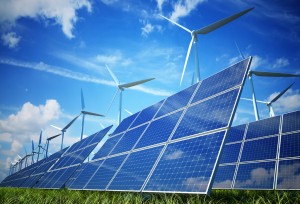Climate change optimism is justified – a complete transition from carbon to solar and wind power looks practical and affordable within a generation
By Chris Goodall for the guardian
My first book on climate change was published 10 years ago. I looked at how responsible individuals could choose to run their lives to cut their carbon footprint.
Inevitably minimising your carbon footprint meant making some uncomfortable choices – stopping eating meat, for example, or giving up flying. Hair-shirtism, in short. In 2009, I advised individuals on how they could cut their carbon emissions by 10%.
I then disobeyed some of my own recommendations, flying to the US to visit a daughter at university, for example. Over the subsequent years, it increasingly seemed to me that changing western lifestyles in the way my first book suggested was going to be an impossible struggle.
 Moreover, the world still had more than a billion people without an electricity supply. Any solution that didn’t give them access to power was unfair and unworkable. So I switched to writing about how we could substitute low-carbon energy sources for fossil fuels.
Moreover, the world still had more than a billion people without an electricity supply. Any solution that didn’t give them access to power was unfair and unworkable. So I switched to writing about how we could substitute low-carbon energy sources for fossil fuels.
At first it seemed that renewable electricity would always be more expensive and solar power would languish unless it was heavily subsidised. Using alternative energy sources seemed difficult, expensive and inconvenient. I now think I was completely wrong.
In fact, optimism about successfully tackling climate change has never been more justified because 2016 was the year in which it finally became obvious that the world had the technology to solve the problem. Even as the political environment has darkened, the reasons have strengthened for believing that a complete transition to low-carbon energy is practical and affordable within one generation.
Andrew Simms is right that global temperatures will probably overshoot the 2C target. But that makes the urgency of an energy transition even clearer. Despair is no excuse for inaction.
Solar power costs around the world fell by an average of another 15% in 2016, meaning that electricity from the sun became the cheapest form of energy generation in places as diverse as Chile, parts of the Middle East and the south-west of the US. The world saw the lowest-ever auction price for solar electricity in Abu Dhabi.
China committed to adding about 40 gigawatts annually of solar panels in the next few years, more than half the new capacity installed across the entire world in 2016. India made similarly ambitious plans, meaning that these two countries will put more solar on the ground than the entire world did a couple of years ago.





